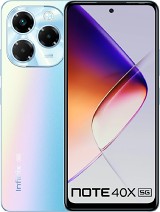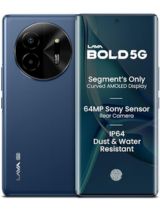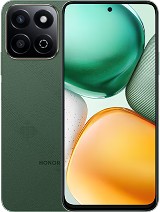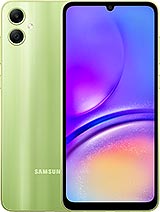Infinix Note 40X alternatives
Tap above to see alternatives.
Lava Storm Play alternatives
Tap above to see alternatives.
Infinix Note 40X

Infinix Note 40X
-
Dimensity 6300
6 nm
-
5000 mAh
18W
-
6.78"
1080x2460 pixels
-
108 MP
1440p@30fps
- Specs
Lava Storm Play

Lava Storm Play
-
Dimensity 7060
6 nm
-
5000 mAh
18W
-
6.75"
720 x 1600 pixels
-
50 MP
1440p@30fps
-
Specs

2x2.4 GHz Cortex-A76
6x Cortex-A55
2x2.6 GHz Cortex-A78
6x2.0 GHz Cortex-A55
12GB 256GB (UFS 2.2)
f/1.8, (wide), PDAF
2 MP
macro
2 MP
Sony IMX752, Wide Angle
2 MP
1080p@30/60fps
1080p@30fps
wide
SIM1: Nano, SIM2: Nano
SIM1: Nano, SIM2: Nano
10 5G bands
n1, n3, n5, n8, n28, n38, n40, n41, n77, n78
9 5G bands
n1, n3, n5, n8, n28, n40, n41, n77, n78
In this performance comparison, the Lava Storm Play with its Mediatek Dimensity 7060 (6nm) performs better than the Infinix Note 40X with the Mediatek Dimensity 6300 (6nm), thanks to superior chipset efficiency.
Infinix Note 40X offers 2 years of OS updates, whereas Lava Storm Play provides 1 years. For security updates, Infinix Note 40X offers 3 years of support compared to Lava Storm Play's 2 years.
Infinix Note 40X features a superior AMOLED display, while Lava Storm Play comes with an LCD panel. Both smartphones offer the same 120 Hz refresh rate. Both devices deliver the same brightness level at nits. Notably, Infinix Note 40X offers a higher screen resolution, resulting in sharper visuals and more detailed content.
Both phones are equipped with the same 5000 mAh battery capacity. Both devices support the same wired charging speed of 18W.
Lava Storm Play offers better protection against water and dust with an IP64 rating.
- Lava Storm Play – Check price here
¹ Scores can vary even with the same chipset due to RAM, thermals, and software optimization.










